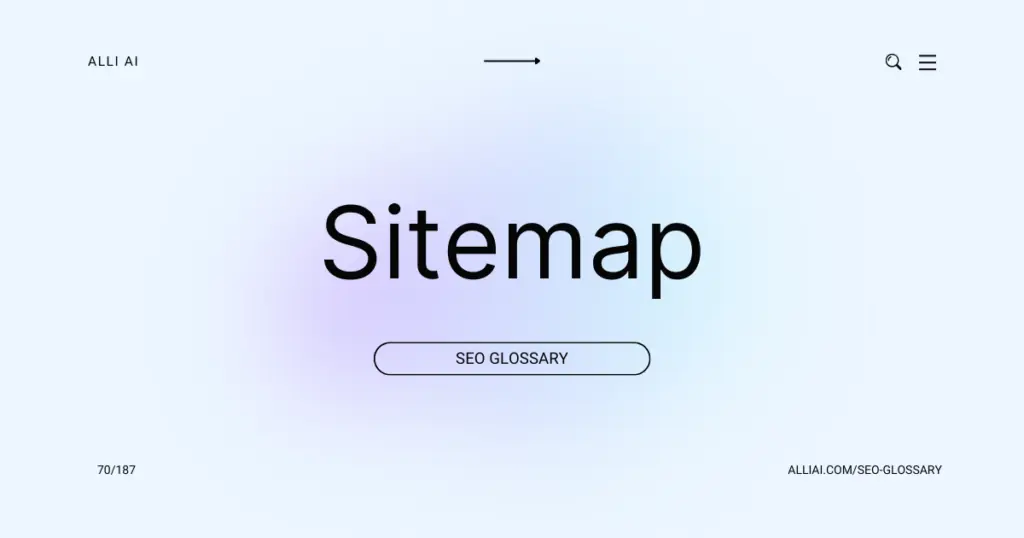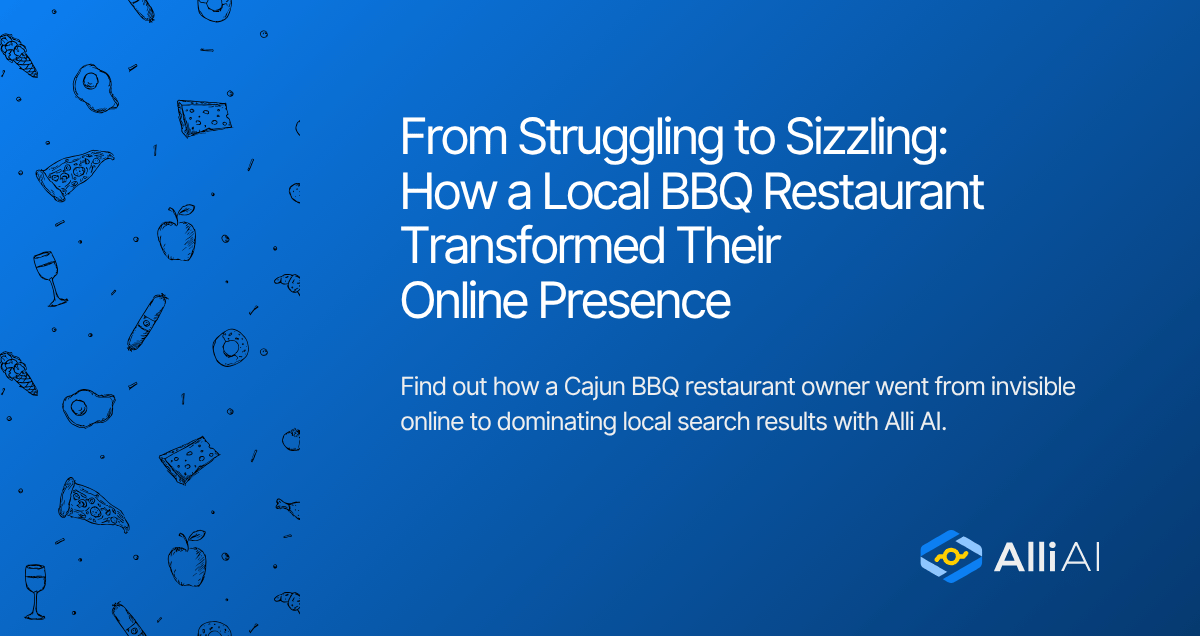What Does Sitemap Mean?
A Sitemap is a file that lists all the pages of a website, helping search engines like Google understand the website’s structure and easily find all its content for better indexing.
Where Does Sitemap Fit Into The Broader SEO Landscape?
A sitemap, essentially a file where you provide information about the pages, videos, and other files on your site, and the relationships between them, plays a critical role in SEO by allowing search engines to more intelligently crawl the site. Search engines like Google read this file to more effectively crawl your site. It tells search engines which pages and files you think are important in your site, and also provides valuable information about these files: for example, for pages, when the page was last updated, how often the page is changed, and any alternate language versions of a page.
In the broader SEO landscape, sitemaps facilitate improved site indexing by search engines, which is foundational to achieving higher rankings. Well-structured sitemaps can ensure that all target pages are discovered and indexed by search engine bots, particularly in cases where a website has pages that are isolated or not well-linked to each other. This aspect is essential for newer websites or those with hundreds of pages or complex navigation structures.
Additionally, sitemaps allow for the optimization of crawling resources. By providing metadata associated with the pages on the website (like the information on the last update and the relative importance of pages), they help search engines prioritize what to crawl, update, or ignore. This is particularly relevant in managing the crawl budget assigned to a site by search engines.
Moreover, sitemaps are indispensable for websites that host a lot of multimedia content (image, video, and audio files), as they help ensure this content can be found and indexed by search engines. Sitemaps can also be used to support the SEO efforts by indicating alternate language versions of content through hreflang annotations, thereby improving search visibility in multiple languages and regions.
Overall, sitemaps form an essential part of SEO strategy, especially when handling large websites, ensuring comprehensive content indexing, supporting international content variations, and optimizing search engine crawl activities.
Real Life Analogies or Metaphors to Explain Sitemap
A sitemap is like the table of contents in a book, providing a detailed list of every page inside that book, guiding the reader to find specific chapters or topics quickly.
Alternatively, you can think of a sitemap as a city map that highlights all the streets, landmarks, and important locations, helping newcomers navigate their way around efficiently without missing any essential spots.
How the Sitemap Functions or is Implemented?
1. Creation: A sitemap is created in XML format which lists all URLs of a site with additional metadata about each URL (change frequency, last update, priority).
2. Implementation: The sitemap is placed at the root directory of the web server; alternatively, it can be submitted to search engines via Webmaster Tools.
3. Discovery: Search engine crawlers, like Googlebot, find the sitemap through the robots.txt file or direct submission and use it to learn about the structure of the website.
4. Crawling: Crawlers read the sitemap to more intelligently navigate and index the pages listed in the sitemap.
5. Indexing: The information provided in the sitemap helps the search engine index the site more effectively, understanding priorities and page update frequencies.
6. Management: Site owners update the sitemap as new pages are added, removed, or when significant updates happen to ensure search engines have the latest information.
These steps collectively ensure that a site’s content is indexed efficiently and accurately by search engines.
Impact Sitemap has on SEO
Sitemaps improve SEO performance by ensuring that search engines can discover and index all relevant pages on a website, enhancing visibility. They facilitate faster indexing of content, particularly for new or large websites with deep architectures or isolated pages, which might otherwise remain undiscovered. By providing a clear map of the website structure, sitemaps also help search engines understand the website hierarchy and the relative importance of pages. This understanding can lead to more efficient crawling, prioritizing important pages, and potentially improving keyword rankings by ensuring all relevant content is indexed.
For user experience, sitemaps aid in navigation and troubleshooting, helping website managers identify and eliminate broken links and structural issues that could hinder user engagement and site usability. This indirect benefit supports SEO by reducing bounce rates and improving engagement signals, which are positive indicators for search engines.
SEO Best Practices For Sitemap
1. Create a comprehensive and up-to-date XML Sitemap or multiple sitemaps for larger sites, categorizing them if necessary (e.g., products, blog posts).
2. Include only canonical versions of URLs and exclude any duplicate or non-essential pages to ensure search engines crawl your most important content.
3. Make sure the URLs in your Sitemap follow a logical, hierarchal structure that enhances understanding of your site’s architecture.
4. Set priority levels and change frequencies in the Sitemap for different types of content, indicating which pages are most important and how often they might change.
5. Validate your Sitemap using an XML Sitemap Validator to ensure there are no errors or issues that could prevent search engine understanding.
6. Upload your Sitemap to your server and ensure it is accessible by placing it in the root directory (e.g., www.yourwebsite.com/sitemap.xml).
7. Submit your Sitemap to Google using the Google Search Console and to Bing using Bing Webmaster Tools. Verify that both search engines can successfully fetch and read the Sitemap.
8. Monitor the status of your Sitemap in the search engine’s webmaster tools to check for any crawl errors or issues that need to be addressed.
9. Keep your Sitemap updated by adding new pages and removing obsolete URLs regularly. Use a dynamic Sitemap generator if your site frequently updates.
10. Re-submit your Sitemap after significant updates to prompt re-crawling of the site by search engines.
Common Mistakes To Avoid
1. Not Updating Sitemap Regularly: Failing to update sitemaps with new or removed pages.
– Solution: Automate sitemap updates or schedule regular maintenance.
2. Ignoring Priority and Frequency Tags: Misusing or not utilizing `
– Solution: Correctly assign priority based on page importance and update frequencies reflective of content changes.
3. Too Large Sitemap Files: Exceeding the limit of 50,000 URLs or 50MB per sitemap.
– Solution: Create multiple sitemap files and use a sitemap index file.
4. Inclusion of Blocked URLs: Including URLs blocked by robots.txt or noindex tags.
– Solution: Regularly audit the sitemap against robots.txt and meta tags, and remove blocked URLs.
5. Incorrect URL Formats: Using inconsistent or non-canonical URLs.
– Solution: Ensure all URLs in the sitemap are absolute paths and match the canonical version of the URL.
6. Using Outdated URL Protocols: Including HTTP URLs instead of HTTPS.
– Solution: Verify that the sitemap reflects the secure protocol if the site has been migrated to HTTPS.
7. Not Submitting Sitemap to Search Engines: Assuming search engines will automatically find the sitemap.
– Solution: Manually submit the sitemap through search engine webmaster tools, like Google Search Console.
8. Neglecting Mobile-Specific Sitemaps: Overlooking mobile users when a separate mobile site version exists.
– Solution: Create and maintain dedicated mobile sitemaps for mobile-specific URLs.
9. Improper Response Codes: Serving sitemaps with non-200 status codes.
– Solution: Monitor sitemap accessibility and ensure proper server responses.
10. Lack of Monitoring and Reporting: Not tracking the indexation rate or errors reported in webmaster tools.
– Solution: Regularly review search engine sitemap reports and address any errors or warnings.






